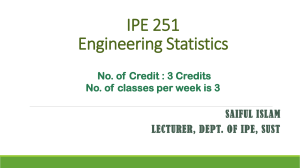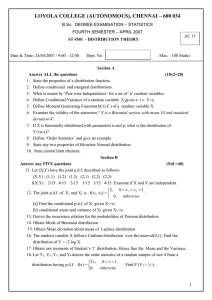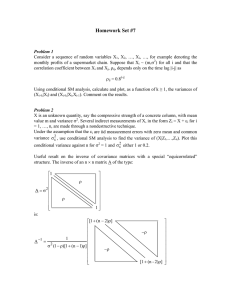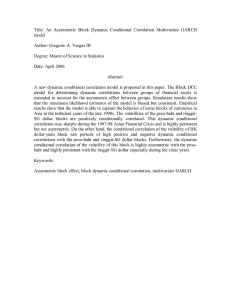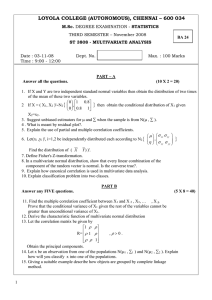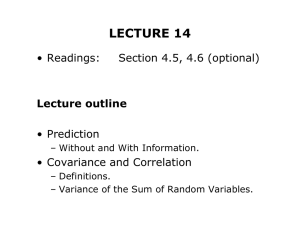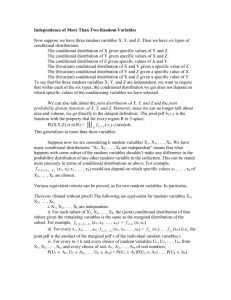Reading Questions for Chapter 3
advertisement
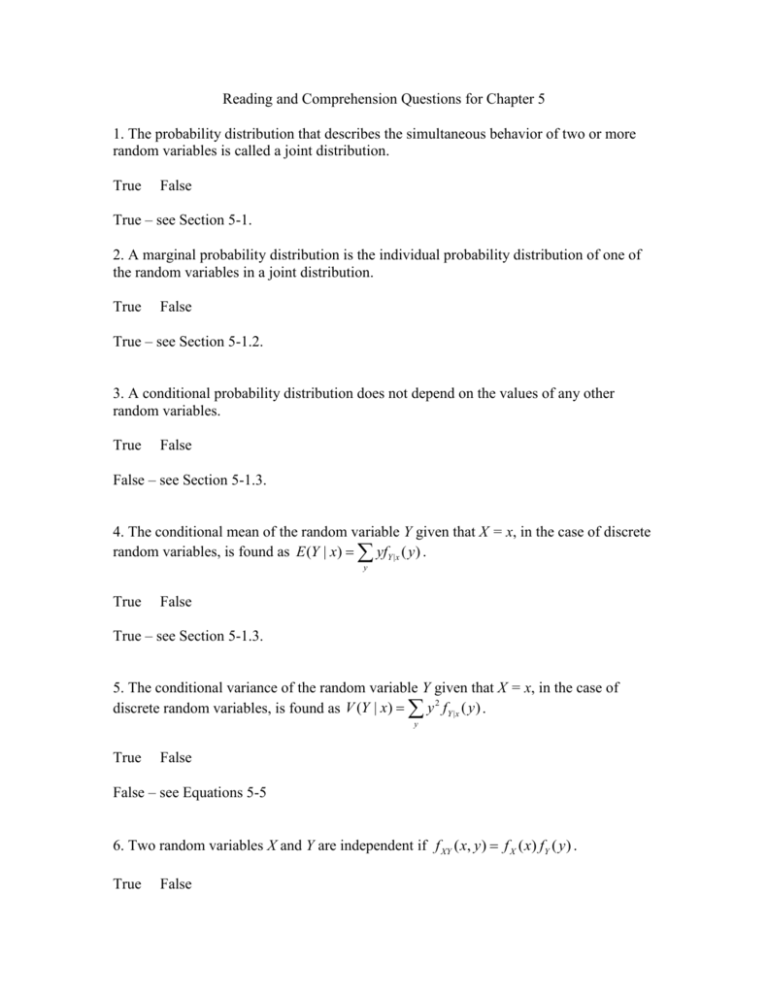
Reading and Comprehension Questions for Chapter 5 1. The probability distribution that describes the simultaneous behavior of two or more random variables is called a joint distribution. True False True – see Section 5-1. 2. A marginal probability distribution is the individual probability distribution of one of the random variables in a joint distribution. True False True – see Section 5-1.2. 3. A conditional probability distribution does not depend on the values of any other random variables. True False False – see Section 5-1.3. 4. The conditional mean of the random variable Y given that X = x, in the case of discrete random variables, is found as E (Y | x) yfY | x ( y ) . y True False True – see Section 5-1.3. 5. The conditional variance of the random variable Y given that X = x, in the case of discrete random variables, is found as V (Y | x) y 2 fY | x ( y ) . y True False False – see Equations 5-5 6. Two random variables X and Y are independent if f XY ( x, y) f X ( x) fY ( y) . True False True – see Section 5-1.4. 7. If the set of points in two-dimensional space that receive positive probability under the joint distribution of X and Y does not form a rectangle, X and Y are independent. True False False – see Section 5-1.4. 8. If X and Y are independent, then fY ( y ) fY | x ( y ) . True False False – see Equations 5-6. 9. The conditional probability mass function is defined as fY | x ( y ) True f XY ( x, y ) . f X ( x) False True – see Section 5-2.3. 10. If X and Y are jointly distributed continuous random variables, the mean and variance of X cannot be found from the joint distribution. True False False – see Section 5-2.5 11. The covariance of two random variables is a measure of the relationship between them. True False True – see Section 5-3. 12. The covariance between two random variables X and Y is a. E[(Y X )(Y Y )] b. E ( XY ) 2 X Y c. E ( XY ) 2 ( X Y ) 2 Answer is a – see Equation 5-26. 13. The correlation between two random variables X and Y is XY True Cov( X , Y ) . V ( X )V (Y ) False True – see Equation 5-27. 14. If X and Y are positively correlated, then there is not a linear relationship between them. True False False – see Section 5-3. 15. If Y and X are independent random variables, then the correlation between them is zero. True False True – see Section 5-3. 16. If the correlation between the two Y and X is zero, then the random variables are independent. True False False – see Section 5-3. 17. The bivariate normal distribution has parameters X , Y , Y2 , X2 and . True False True – see Equation 5-30. 18. If Y and X have a bivariate normal distribution, then the marginal distributions of Y and X are not necessarily normal. True False False – see Section 5-4. 19. If Y and X are random variables and a and b are constants, then the expected value of Y = aY +bX is a. b. c. d. aE ( X ) bE (Y ) aE ( X ) bE (Y ) E ( X ) E (Y ) E ( X ) E (Y ) Answer is b – see Equation 5-35 for the general case. 20. If Y and X are random variables and a and b are constants, then the variance of Y = aY +bX is a2Y +a2X . True False True – see Equation 5-37 for the general case.
